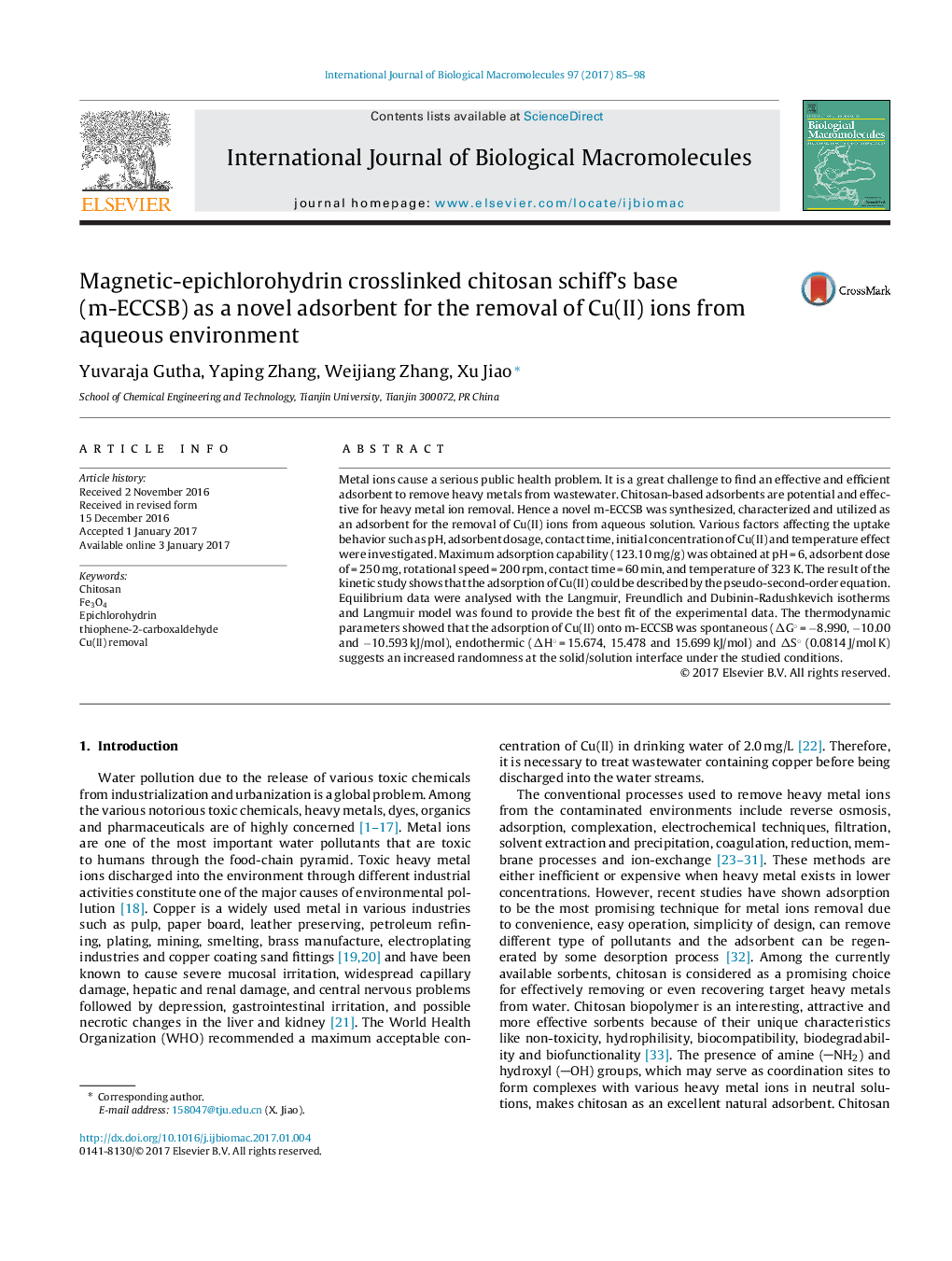| کد مقاله | کد نشریه | سال انتشار | مقاله انگلیسی | نسخه تمام متن |
|---|---|---|---|---|
| 5512579 | 1540221 | 2017 | 14 صفحه PDF | دانلود رایگان |

- Removal of Cu(II) ions by m-ECCSB was studied.
- m-ECCSB was characterized by X-RD, FTIR, SEM with EDS, TEM 1HNMR, and VSM analysis.
- The pseudo-second-order model best described the sorption kinetics.
- Langmuir model provided the best correlation for the experimental data.
Metal ions cause a serious public health problem. It is a great challenge to find an effective and efficient adsorbent to remove heavy metals from wastewater. Chitosan-based adsorbents are potential and effective for heavy metal ion removal. Hence a novel m-ECCSB was synthesized, characterized and utilized as an adsorbent for the removal of Cu(II) ions from aqueous solution. Various factors affecting the uptake behavior such as pH, adsorbent dosage, contact time, initial concentration of Cu(II) and temperature effect were investigated. Maximum adsorption capability (123.10 mg/g) was obtained at pH = 6, adsorbent dose of = 250 mg, rotational speed = 200 rpm, contact time = 60 min, and temperature of 323 K. The result of the kinetic study shows that the adsorption of Cu(II) could be described by the pseudo-second-order equation. Equilibrium data were analysed with the Langmuir, Freundlich and Dubinin-Radushkevich isotherms and Langmuir model was found to provide the best fit of the experimental data. The thermodynamic parameters showed that the adsorption of Cu(II) onto m-ECCSB was spontaneous (ÎG° = â8.990, â10.00 and â10.593 kJ/mol), endothermic (ÎH° = 15.674, 15.478 and 15.699 kJ/mol) and ÎS° (0.0814 J/mol K) suggests an increased randomness at the solid/solution interface under the studied conditions.
Journal: International Journal of Biological Macromolecules - Volume 97, April 2017, Pages 85-98